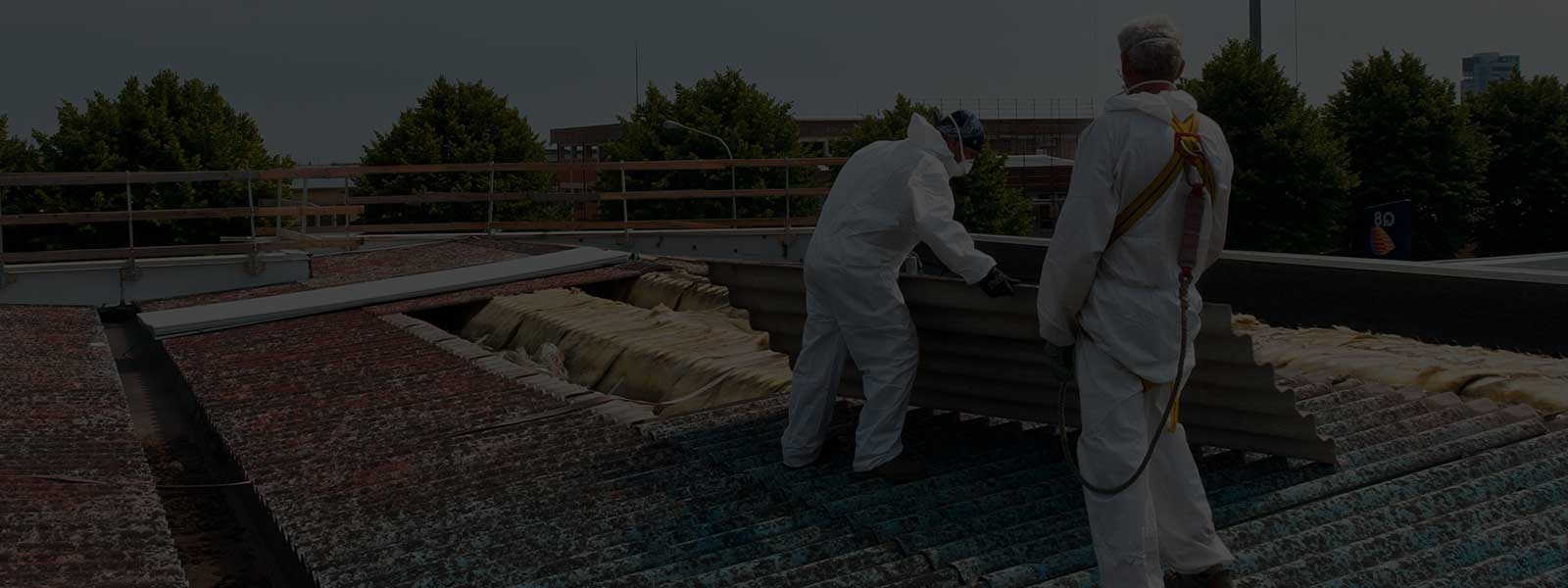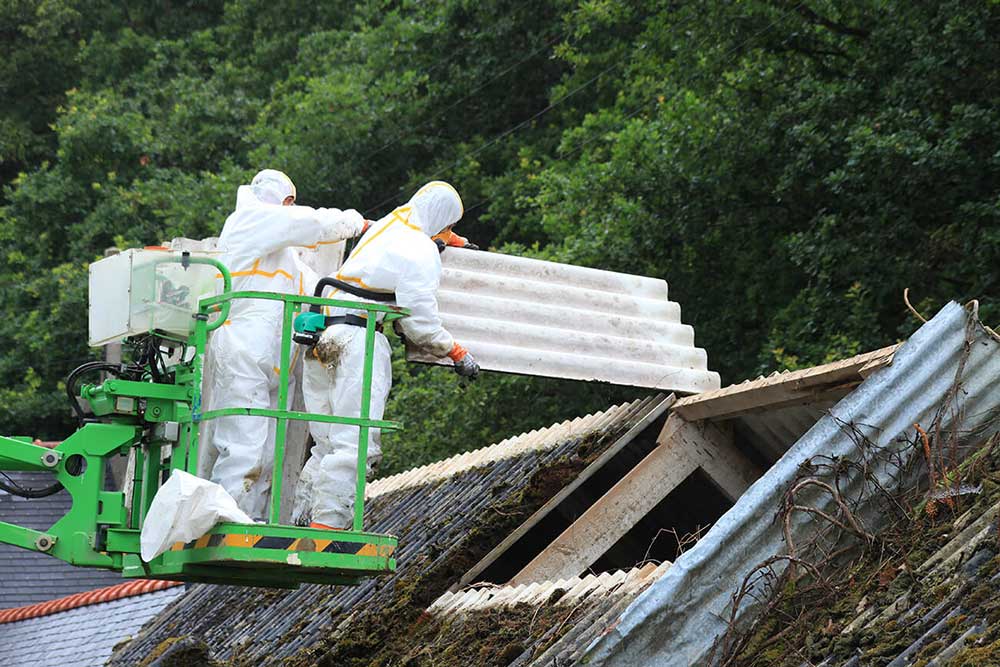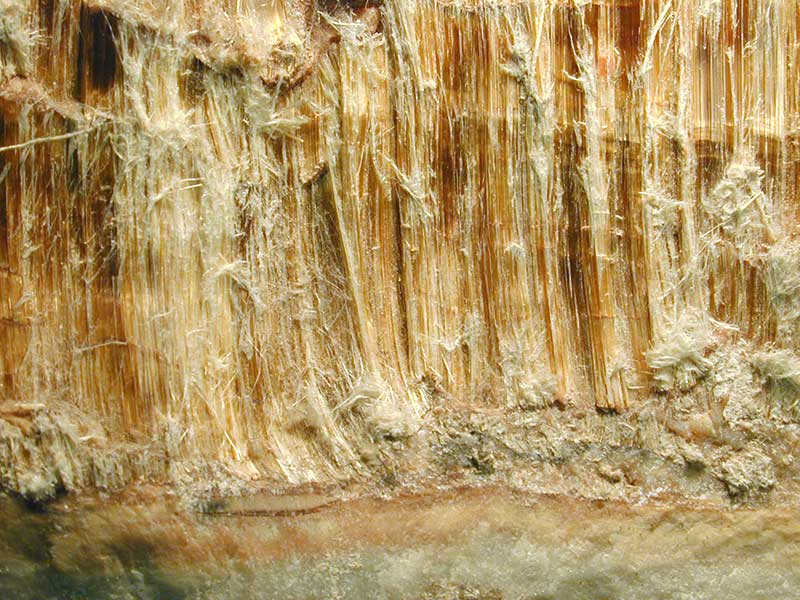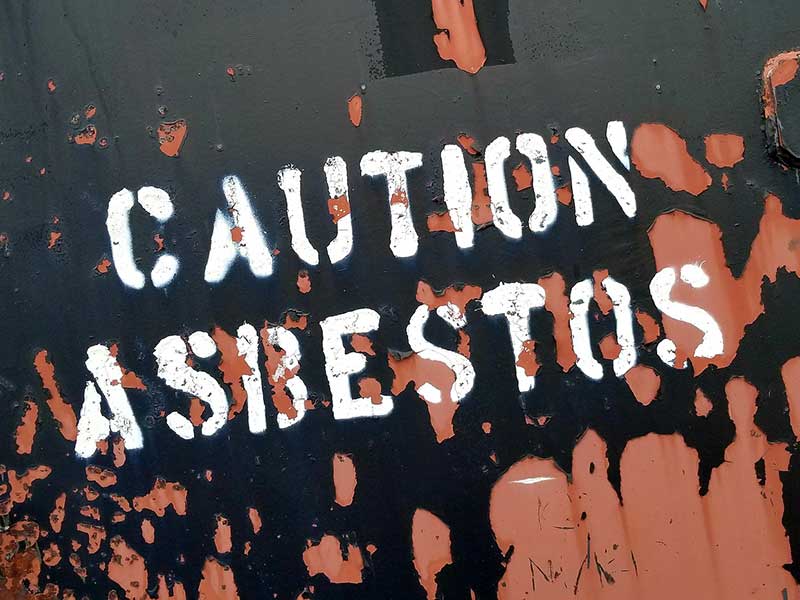
Do You Have An Asbestos Roof?
Whether it be a domestic or commercial client, when people discover that they have an asbestos roof, generally their first reaction is to remove it as soon as possible. This is a general misconception as asbestos, if undamaged and the current condition is good can be perfectly safe. Asbestos roofs can last for many years.
Asbestos roofing is fire resistant and is the main reason why it became such a popular material before the harming effects were found. There are now plenty of modern alternatives to asbestos roofs that offer similar levels resistance and protection, but without the health implications that can accompany an asbestos roof.
If an asbestos roof is in good condition and requires repairing rather than replacing, this can still be achieved but this does need to be undertaken by a professional with the correct qualifications to work on asbestos roofs.
KD Asbestos have a team of specialist asbestos roof repair experts who are trained and hold the relevant licenses and qualifications to remove this highly dangerous material.
We’re Experts For A Reason
Asbestos roofing is brittle and breaks extremely easily making this a dangerous material airborne. So it is imperative that an expert carries out any repairs or removals to prevent the harmful asbestos fibres escaping into the atmosphere. Repairing or replacing an asbestos roof is common practice for us so please get in contact if you have any concerns.

Asbestos Roof Removal Services
KD Asbestos roof removal services are undertaken by a dedicated team of professionals spanning over 25 years of experience.
Secure and safe removal of:
- Corrugated garage roofs
- Cement roofing shingles
- Guttering, fascias, soffits
- Millboard
- Roll-board insulation
- Suspended ceiling tiles
- Floor Tiles
- Artex textured ceilings and walls
- Acoustic and decorative ceiling plasters
- Cement pipes
- Heating & ventilation duct insulation

What is Asbestos?
Asbestos is a group of minerals made of microscopic fibres. The dangers of asbestos were unknown, asbestos was often used in buildings for insulation, flooring and roofing and sprayed on ceilings and walls.
Asbestos is banned in the UK and there are strict regulations on who can work on it and dispose of it. Asbestos can be found in any building built before the year 2000 when the use of it was banned in the construction industry. Asbestos found in houses, factories, offices, schools, hospitals still contribute to around 5000 deaths every year.
There are strict regulations in place to cover the duty to manage asbestos in non-domestic premises. These regulations require duty holders to identify the location and condition of asbestos in non-domestic premises and to manage the risk element to prevent harm to anyone working on the building or residing in it.

What Makes Asbestos Hazardous?
Asbestos becomes toxic when the fibres are damaged or interrupted, and are released into the atmosphere.
If those fibres are inhaled, it can lead to a variety of diseases, of which most are hard to treat and can become fatal.
These include:
- lung cancer
- ovarian cancer
- malignant mesothelioma
- laryngeal cancer
- asbestosis
- pleural thickening
Many respected health agencies classify every kind of asbestos as being carcinogenic.
Some of these studies attempted to categorise toxicity levels in asbestos, and concluded that Chrysolite, the serpentine asbestos category, is by far the poorest in terms of threat to health.
Do you need an asbestos survey? Let us help!
We have the capability to provide a high quality and efficient service, to locate and identify any suspect hazardous materials. Our service is fast and efficient, backed up by extremely competitive rates. So speak to KD Asbestos first!
Types of Asbestos
There are six different types of asbestos that are different minerals sharing common traits and are technically grouped together as “asbestos”.
White Asbestos
Also known as chrysotile, this is the most commonly used form of asbestos. It was used in walls, floors, roof and ceiling tiles. It is still used in brake linings and other industrial uses.
Chrysotile is classified as a part of the branch of serpentine formed minerals. It is made up of curly fibres. This shape makes chrysotile fibres easier to breathe out and less damaging to the lungs than other types of asbestos.
Chrysotile was the last type of asbestos to be banned in the UK completely in 1999.
Crocidolite (Blue Asbestos)
Is commonly found as part of steam engines, pipe insulation, spray-on coatings, types of cement wallboard and more. It is considered the most dangerous type of commonly used asbestos. Crocidolite Asbestos was banned in the UK in 1970.
Crocidolite fibres are short and sharp. They cause long-lasting damage when inhaled and the sharp fibres puncture the lining of the lungs. The crystalline shape makes them difficult to exhale.
Crocidolite is an amphibole, which means it forms in prisms. Amosite, tremolite, anthophyllite and actinolite are also amphiboles. They are very dangerous when inhaled and get stuck in the lung.
Crocidolite was very common in the marine industry for use on ships and submarines particularly used in the pipe lagging. This exposure was similar through plumbing and steam plant.
Amosite (Brown Asbestos)
Brown Asbestos Is found in, sheetrock, insulation boards, thermal insulation and ceiling tiles. Amosite originated in South Africa and its use in the UK was widespread. Amosite was banned in 1980.
The fibres in Brown Asbestos are coarse and strong so the two are generally found blended in insulation boards.
The Exposure to amosite asbestos has found to create a higher risk of lung cancer in comparison with chrysotile asbestos. Brown Asbestos fibres are brittle, sharp and easily inhaled and find themselves imbedded in the lung by barbed hooks and impossible to exhale.
Anthophyllite
Anthophyllite varies in colour and can be green, grey or white. It has limited use when it comes to insulation.
Tremolite
Tremolite can also come in various colours brown, white, green, grey or transparent. Tremolite forms short prisms and is often mixed with the fibres of chrysolite.
Actinolite
Actinolite Is similar chemically to tremolite and is often found in similar circumstances. It can also be variant in colour clear, grey, green or white.